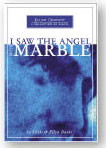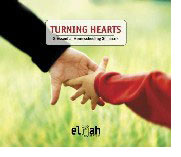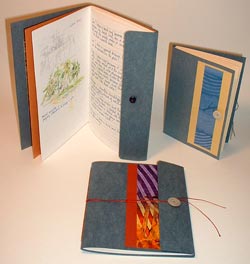
Nature Walks and
Nature Journals
Read past issues of the
e-journal HERE>>
Sign up below to have the e-journals sent directly to your inbox.
by Ellyn Davis
Last week's e-journal was about spring and how it is the ideal time to study nature and get started on a nature journal. If you missed it, GO HERE>>
One of the best ways to develop the observation skills that are essential to nature journaling is to take nature walks.
Nature walks are the backbone of any "hands-on" science study and are the best way to familiarize children with the natural world. Taking a nature walk simply means you are going to place yourself and your children in the context of living, breathing plants and animals and are going to interact with nature first-hand rather than through books or in a laboratory.
This can be done in your backyard, in your city partk, or in a neighbor's field. If at all possible, find an area that has both open spaces and woods and that is near water, because that type of terrain gives you the best variety of plants and animals.
Here are some basic guidelines to taking your children on a nature walk.
1. Prepare beforehand. Find books about the different plants and animals in your area and have some idea of what you will look for. It is better for the children if the first few nature walks actually turn up something interesting, so plan the walk in an area and at a time when the wildlife you want to see will be observable. For example, pick a few common birds, a few common plants, and a few common insects that you are almost guaranteed to see and make them the object of your first few walks. You can prepare the children beforehand with sheets to color (from Field Guide Coloring Books, shown below), with bird songs to listen to, and with field guides to look at.
An inspiring book to read beforehand (you can even read aloud to your children) is Naming Nature. The author set out to make the acquaintance of her natural neighborhood. She realized that if she learned just the most common plants, birds, and animals around her, she would probably recognize most of what she saw. So she learned one name at a time, a few names a week, for a year. Naming Nature chronicles her year of naming things and is a wonderful guide for amateur naturalists.
 Other very helpful books are The National Audubon Society Regional Field Guides (see below). These are the only books that take you habitat-by-habitat (sandy beach, lake and pond, swamp, etc.) in a particular region and tell you what to look for and listen for, and how to find both plants and animals in each different habitat. With these guides you can take a nature walk anyplace in the United States. Other very helpful books are The National Audubon Society Regional Field Guides (see below). These are the only books that take you habitat-by-habitat (sandy beach, lake and pond, swamp, etc.) in a particular region and tell you what to look for and listen for, and how to find both plants and animals in each different habitat. With these guides you can take a nature walk anyplace in the United States.
If you live in the city, Peterson's First Guide to Urban Wildlife is very helpful because it covers all the creatures a city child is likely to see.
2. Make it enjoyable. If you and your children are not used to spending a lot of time outdoors, you must prepare beforehand so that it will be a pleasant experience. Pick a time of day when the temperature is comfortable and no one is tired or hungry. Wear the proper shoes and clothes; put on insect repellent and sunscreen; perhaps take drinks and a snack. Start with short excursions of 15 to 20 minutes. The times can be lengthened as interest builds.
3. Invest in the tools of the trade. As finances allow, begin acquiring the following: A pair of lightweight binoculars, a hand lens, a few pocket field guides, stout walking sticks for probing in holes and under rocks and logs, a small field notebook, and something to hold treasures your children may find. If you want to encourage your children to keep a nature journal, have the supplies on hand: a blank journal, pens, colored pencils or markers, etc.
 4. Agree beforehand on the behavior you expect. Nothing is more frustrating than having a unique "nature moment" spoiled by a loud "Hey! Look at that!" Agree beforehand on the behavior you expect: no loud noises, no running ahead or hanging behind, no damage to the landscape, etc. It is also helpful to develop hand signals for "Gather around," "Look at that," "Go this way," "Stop here," and other frequent communication you may have during your walks. 4. Agree beforehand on the behavior you expect. Nothing is more frustrating than having a unique "nature moment" spoiled by a loud "Hey! Look at that!" Agree beforehand on the behavior you expect: no loud noises, no running ahead or hanging behind, no damage to the landscape, etc. It is also helpful to develop hand signals for "Gather around," "Look at that," "Go this way," "Stop here," and other frequent communication you may have during your walks.
Make sure the children understand basic safety rules such as never sticking their hands into a hole or brush pile without first probing with a stick, never entering water without your permission, and so forth. Also be sure they can recognize any poisonous plants (particularly poison ivy), snakes, or insects they might encounter.
5. Gradually increase the level of difficulty. As children become used to nature walks, you can demand longer periods of silent attention, you can take more lengthy excursions, you can go out in uncomfortable weather, etc. A wonderful book that begins with simple observation techniques and gradually introduces advanced observation, tracking, and survival skills is Tom Brown's Field Guide to Nature and Survival for Children.
Steps to Creating a Nature Journal
First, decide what kind of nature journal you want to make. You can use a nature journal to simply record all your excursions into nature, or you can create a nature journal that just focuses on a certain place (such as a river, a park, or your backyard) or certain thing (such as butterflies of eastern Tennessee), or one to chronicle a particular field trip.
Second, make or buy a suitable journal. There is an excellent article about creating a journal like the one pictured at the top of this page. Find it here>>.
There are also several excellent books that give examples of nature journals. For example, Keeping a Nature Journal by Leslie Roth and The Country Diary of an Edwardian Lady,
Third, get any other equipment you'll need. A journal and a pencil will do just fine if you simply want to write in your journal and make sketches. If you want to do more colorful drawings, get crayons or colored pencils--maybe even a watercolor set. If you want to paste photos or found objects into your journal, get some appropriate adhesive. If you've got a lot of equipment, you may want a special case or binder to keep it all together.
Dedicate time to journaling. Finding time to keep a journal or diary of any kind can be difficult, and nature journals are no different. Depending on the plan for your journal, though, you can be flexible. Perhaps you just want to go out one day on the weekends, or perhaps you just want to keep your journal while on a camping trip. If you're doing fieldwork, of course, you'll probably need to make an entry in your journal at least once a day. Whatever you do, make sure you actually use your journal.
Record your observations with drawings or paintings. A lot of people consider themselves bad artists, and you may be one of them. No matter what your current artistic ability, you should at least try to do some sketches of plants, animals, or scenes that you observe. A great resource for learning to draw different aspects of nature is Drawing From Nature. No matter what your artistic ability, drawing helps you focus on what you're looking at more intently and forces you to pay attention to different attributes of the plant, animal, or landscape that you may have missed by just observing it. Your drawings will get better with time and practice, so don't give up.
Take pictures. A great alternative to drawing is photography. Take photos of what you see, then if you want to draw them, you have a "frozen in time" rendition of what you observed in the field.
What to Write in A Nature Journal
- Write about what you observe--identifying characteristics, how the animal acted, where the plant was located, what the weather was like, the environment you were in, and so forth.
- Be descriptive. Write about what you see as if you're seeing it for the first time. Be as descriptive as possible so that another person could pick up your journal 100 years from now and be able to picture the bird you wrote about and learn about it even if that bird no longer exists. While this may seem silly, keep in mind that nature journals provided us with much of what we know about some of the many animals that became extinct in the past two centuries.
- Write how you feel. If you feel awestruck by a mountain or calmed by the sight of a bee on a flower, go ahead and put that in your journal. A nature journal gives you an opportunity to respond to the natural world. Let your thoughts flow freely onto the paper.
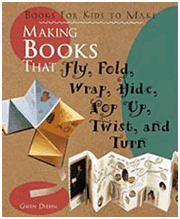 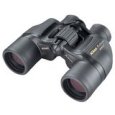 This is a really, really neat book. Making Books That Fly, Fold, Wrap, Hide, Pop Up, Twist, and Turn. just makes you want to get creative and make one of these fantastic books. Why not make a nifty nature journal. This is a really, really neat book. Making Books That Fly, Fold, Wrap, Hide, Pop Up, Twist, and Turn. just makes you want to get creative and make one of these fantastic books. Why not make a nifty nature journal.
Tools of the Trade
Nikon Action 8x40 Binocular. These Nikon 8 x 40 binoculars are ideal for field work. Excellent optics at a reasonable price.
Top 12 Nature Notebooking and Nature Study Resources
Here are my top picks for nature study.
1. Rather than teaching science from a textbook, why not let each child keep
a nature journal? The Country Diary of an Edwardian Lady is a wonderful example
of how nature, art, literature, and history can be interwoven. In 1906
Edith Holden began a nature journal in which she recorded and illustrated
what she saw month by month during walks in the English countryside. She began each
month’s entry with brief historical explanations of events associated with that month. The rest of each month’s entry consisted of notes of what she saw on her frequent
walks interspersed with drawings of selective wildlife and plants. She also included poems and famous quota tions about the month or about the things she saw. Her
watercolor illustrations are exquisite and her Victorian penmanship is delightful.
 2. Keeping a Nature Journal is the nature journaling “how-to” book we have been
wishing for. It begins by explaining the equipment you will need and giving some simple and encouraging sketching lessons. Then it gets to the best parts—many, many pages
with samples of journaling styles, generously interspersed with tips on different ways to develop a nature journal, plus ideas for journaling in each season of the year. A beautifully done, very special book that will make you long to start your own nature journal. 2. Keeping a Nature Journal is the nature journaling “how-to” book we have been
wishing for. It begins by explaining the equipment you will need and giving some simple and encouraging sketching lessons. Then it gets to the best parts—many, many pages
with samples of journaling styles, generously interspersed with tips on different ways to develop a nature journal, plus ideas for journaling in each season of the year. A beautifully done, very special book that will make you long to start your own nature journal.
 3. Pets in A Jar is our all-time favorite nature book. It teaches you how to find, catch, and keep many small animals such as butterflies and moths, earthworms, water bugs, hydras, toads, newts, pond snails, crickets, tadpoles, praying mantises, and more. For ages 9 and up and extremely useful to mothers whose children keep bringing home “critters.” If you intend to study animals in a hands-on way, this is the book to get. A “must have” for young naturalists. All ages. 3. Pets in A Jar is our all-time favorite nature book. It teaches you how to find, catch, and keep many small animals such as butterflies and moths, earthworms, water bugs, hydras, toads, newts, pond snails, crickets, tadpoles, praying mantises, and more. For ages 9 and up and extremely useful to mothers whose children keep bringing home “critters.” If you intend to study animals in a hands-on way, this is the book to get. A “must have” for young naturalists. All ages.
 4. Fun with Nature and More Fun With Nature are really neat hardcover “take-
along guides” to exploring the outdoors that cover the most common bugs,
reptiles, amphibians, small animals,and trees, with full color illustrations of
what it looks like, what it eats, and where to find it. Filled with fascinating facts & activities for ages 6 - 12. 4. Fun with Nature and More Fun With Nature are really neat hardcover “take-
along guides” to exploring the outdoors that cover the most common bugs,
reptiles, amphibians, small animals,and trees, with full color illustrations of
what it looks like, what it eats, and where to find it. Filled with fascinating facts & activities for ages 6 - 12.
5. Nature Log for Kids can be the first step to keeping a nature journal. A colorful, spiral-bound 5" x 7" book that guides kids to record their nature observations. Pages have ruled spaces at the top to enter “What I Saw,” “Where I Saw It,” & “Observations” and a blank lower half labeled “It Looked Like This” for sketches. Interspersed between these log pages are blank pages for photos, clippings, pressed leaves, etc.
 6. Audubon Society Pocket Guides. We like pocket guides best for ages 8 and under because they have color photographs instead of drawings, their compact size (4" x 6") appeals to children, and they cover only things a child is likely to see. Each guide is about 200 pages with each left side page a color photograph and each right side page a brief explanation. Get as many of these as your budget allows. 6. Audubon Society Pocket Guides. We like pocket guides best for ages 8 and under because they have color photographs instead of drawings, their compact size (4" x 6") appeals to children, and they cover only things a child is likely to see. Each guide is about 200 pages with each left side page a color photograph and each right side page a brief explanation. Get as many of these as your budget allows.
7. Audubon Society Field Guides are the BIG, comprehensive field guides (5" x 8" x 1½” thick) with flexi-vinyl covers. Start with the ones on the wildlife your children are most interested in and gradually build up your collection of all of them.
 8. Peterson First Guides. These are the only non-Audubon guides we recommend, because they cover areas of animal life not found in the Audubon pocket guides. Peterson First Guide to Urban Wildlife covers the city wild creatures a child is likely to see. Peterson First Guide to Caterpillars is the only children's guide I know of that covers caterpillars. 8. Peterson First Guides. These are the only non-Audubon guides we recommend, because they cover areas of animal life not found in the Audubon pocket guides. Peterson First Guide to Urban Wildlife covers the city wild creatures a child is likely to see. Peterson First Guide to Caterpillars is the only children's guide I know of that covers caterpillars.
 9. Reader's Digest Guide to North American Wildlife covers the most common plants, animals, insects, and sea life in North America. A one-stop nature study resource. 9. Reader's Digest Guide to North American Wildlife covers the most common plants, animals, insects, and sea life in North America. A one-stop nature study resource.
10. National Audubon Society Regional Field Guides. The animals, plants, and natural
environments of different regions of the United States are fully described in these nifty field guides. Each guide contains more than 1,000 accounts of local animal and plant species; clear explanations of each region’s natural history, climate, and night sky; information on all the best parks, preserves, forest, and sanctuaries; and nearly 1,500 color illustrations, photographs, maps, diagrams, and drawings. These are wonderful alternatives to buying separate field guides for birds, trees, wildflowers, night sky, etc.
Field Guide to the Southeastern States (Alabama, Arkansas, Georgia, Kentucky, North Carolina, South Carolina, Tennessee)
Field Guide to the Southwestern States (Arizona, Nevada, New Mexico, Utah)
Field Guide to New England (Connecticut, Maine, Massachusetts, New Hampshire, Rhode Island, Vermont)
Field Guide to the Mid-Atlantic States (New York, Pennsylvania, New Jersey, Maryland, Delaware, West Virginia, Virginia)
Field Guide to the Pacific Northwest (Oregon, Washington)
Field Guide to the Rocky Mountain States (Idaho, Montana, Wyoming, Colorado)
Field Guide to California
Field Guide to Florida
 11. Field Guide Coloring Books. Our children have made their own field guides by cutting and pasting birds, wildflowers, trees, and other wildlife from these coloring books into their nature journals.There are probably 50 (+) or so line drawings of reptiles, birds, etc. based on Peterson's Field Guides, each with an interesting explanation. Your child can
color in each drawing after finding its picture somewhere in the book. The
diagrams are detailed enough for older kids as well as little ones probably
starting with age 5 or so. Each book also has pages of colored stickers for
extra fun and observation. 11. Field Guide Coloring Books. Our children have made their own field guides by cutting and pasting birds, wildflowers, trees, and other wildlife from these coloring books into their nature journals.There are probably 50 (+) or so line drawings of reptiles, birds, etc. based on Peterson's Field Guides, each with an interesting explanation. Your child can
color in each drawing after finding its picture somewhere in the book. The
diagrams are detailed enough for older kids as well as little ones probably
starting with age 5 or so. Each book also has pages of colored stickers for
extra fun and observation.
 12. Tom Brown's Field Guide to Nature and Survival for Children was written by the famous tracker and wilderness survival expert Tom Brown. This is a fascinating book that the whole family will enjoy reading. 12. Tom Brown's Field Guide to Nature and Survival for Children was written by the famous tracker and wilderness survival expert Tom Brown. This is a fascinating book that the whole family will enjoy reading.

© Copyright 2008. Home School Marketplace, 1053 Eldridge Loop, Crossville, TN 38571.
|





 This is a really, really neat book.
This is a really, really neat book. 






 12.
12. 



